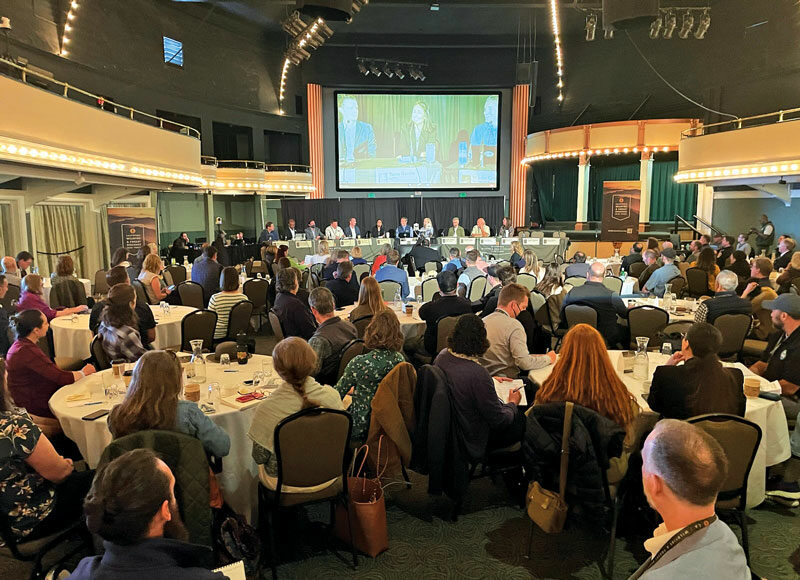In 2020, the CZU fires ravaged the Santa Cruz Mountains, destroying 1,490 structures and an untold number of trees.
A little more than two years later, many of those downed trees washed down streams into the ocean. During the storms in January and February, the trees smashed into the wharf at Seascape State Beach, heavily damaging the Capitola Wharf and causing millions of dollars of damage.
That was a perfect example of how forest health—and wildfire risk—ties into multiple aspects of life on the Central Coast, says Santa Cruz County Supervisor Zach Friend, who was part of an all-day seminar hosted by the California Wildfire and Forest Resilience Task Force.
“There is an interrelation between climate disasters,” Friend says. “Dead and felled trees from the CZU fire became the same trees that caused damage in Seacliff and Capitola. We have to look at, and plan for, this connection of extreme drought and extreme flood and see that one disaster can lead to other challenges years after the event.”
Gov. Gavin Newsom created the Task Force. It calls for a comprehensive statewide strategy for wildfire and forest management, which includes aligning the alphabet soup of local, state, federal and tribal agencies that are involved in forest health and wildfire management. At the heart of the seminar was the knowledge that much of California is facing the possibility of a catastrophic fire season.
“We all know the climate is changing, and conditions are riper and riper for catastrophic wildfire,” says California Natural Resources Agency Secretary Wade Crowfoot. “We are just months away from what could be another devastating wildfire.”
More importantly, the differing landscapes and climates throughout the state require different regional approaches to management.
“One thing I’ve learned is that wildfire threats are very different, depending on where you are in California,” Crowfoot says.
In the Central Coast, there have been nine forest health projects and 71 wildfire prevention efforts thanks to the Task Force. In addition, fuel reduction efforts have been on 32,000 acres and prescribed burns on 23,000 acres. Crowfoot says the Task Force has 1,200 wildfire management projects in the works, but there needs to be more.
“I think we need to move much more quickly than we have today,” he says.
Most importantly, managing the state’s forests and reducing wildfire risks also requires the collaboration of multiple agencies and organizations.
“This is a collective effort,” says Jennifer Eberlien, a regional forester with the U.S. Forest Service’s Pacific Southwest Region. “Not one entity can do it by themselves.”
Chris Dicus, a natural resources management professor at California Polytechnic State University in San Luis Obispo, showed the audience a photo of heavy undergrowth exacerbated by the heavy rains as an example of the state’s current wildfire risk.
“It looks like a battlefield, and that’s because it is a battlefield,” he says. “Wildfire is going to be a problem, so we have to get over the idea that it’s not going to happen to us.”
Dicus says that management and prevention efforts must include shaping this battlefield by, among other things, creating refuge areas in mountainous regions where evacuation is difficult or impossible during wildfires and creating ways for firefighters to access the sites.














Thanks for the continued support of our local fire safe councils